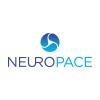RNS® System Pivotal Study
Epilepsy

About this trial
This is an interventional treatment trial for Epilepsy focused on measuring Responsive Stimulation, Brain Stimulator, Epilepsy, Seizures
Eligibility Criteria
Inclusion Criteria for enrollment: Subject has disabling motor simple partial seizures, complex partial seizures, and/or secondarily generalized seizures. Disabling refers to seizures that are severe enough to cause injuries or significantly impair functional ability. Subject's seizures are distinct, stereotypical events that can be reliably counted. Subject failed treatment with a minimum of 2 anti-seizure medications. Subject has remained on the same antiepileptic medication(s) over the 3 most recent consecutive months (other than acute, intermittent use of benzodiazepines). Subjects on the ketogenic diet are permitted if the diet has been stable for the preceding 3 months. Subject reports having an average of 3 or more disabling motor simple partial seizures, complex partial seizures and/or secondarily generalized seizures per month over the 3 most recent consecutive months, with no month with less than 2 seizures. Subject is between the ages of 18 and 70 years. Subject has undergone diagnostic testing that has identified no more than 2 epileptogenic regions. Subject is male or a female of childbearing potential using a reliable method of contraception or is at least two years post-menopause. Subject or legal guardian is able to provide appropriate consent to participate. Subject can be reasonably expected to maintain a seizure diary alone or with the assistance of a competent individual. Subject is able to complete regular office and telephone appointments per the protocol requirements. Subject is willing to be implanted with the RNS® System as a treatment for his/her seizures. Subject is able to tolerate a neurosurgical procedure. Subject is considered a good candidate to be implanted with the RNS® System. Note: A subject is still eligible to participate if antiepileptic medication(s) were temporarily discontinued for the purposes of diagnostic or medical procedures during the preceding 3 months. Exclusion Criteria for enrollment: Subject has been diagnosed with psychogenic or non-epileptic seizures in the preceding year Subject has been diagnosed with primarily generalized seizures. Subject has experienced unprovoked status epilepticus in the preceding year. Subject has a clinically significant or unstable medical condition (including alcohol and/or drug abuse) or a progressive central nervous system disease. Subject is taking chronic anticoagulants. Subject has been diagnosed with active psychosis, major depression or suicidal ideation in the preceding year. Subjects with post-ictal psychiatric symptoms need not be excluded. Subject is pregnant or planning on becoming pregnant in the next 2 years. Subject is enrolled in a therapeutic investigational drug or device trial. Subject has an implanted Vagus Nerve Stimulator (VNS) or is unwilling to have the VNS explanted. (VNS therapy must have been discontinued for at least 3 months prior to enrollment.) Subject has had therapeutic surgery to treat epilepsy in the preceding 6 months. Subject has had a cranial neurosurgical procedure (including endovascular procedures) other than an epilepsy surgery involving the skull or brain in the previous month. Subject is implanted with an electronic medical device that delivers electrical energy to the head. Subject is an unsuitable candidate for neurosurgery. Subject requires repeat MRIs in which the head is exposed to the radio frequency field. Subject's epileptogenic region(s) is/are located caudal to the level of the thalamus. Implantation of the RNS® Neurostimulator and Lead(s) would present unacceptable risk.
Sites / Locations
- University of Alabama at Birmingham
- Mayo Clinic - Arizona
- University of Southern California
- California Pacific Medical Center
- Yale University School of Medicine
- George Washington University
- University of Florida at Gainesville
- Mayo Clinic - Jacksonville
- Miami Children's Hospital
- Emory University
- Medical College of Georgia / Georgia Health Sciences University
- Rush University Medical Center/ Epilepsy Center
- Indiana University
- Via Christi Comprehensive Epilepsy Center
- Johns Hopkins University School of Medicine
- Massachusetts General Hospital
- Henry Ford Hospital
- Mayo Clinic - Rochester
- Dartmouth-Hitchcock Medical Center
- Saint Barnabas Medical Center
- Columbia University / Columbia Presbyterian Medical Center
- University of Rochester
- Wake Forest University Health Sciences
- Cleveland Clinic Foundation
- Oregon Health & Science University
- Thomas Jefferson University
- Medical University of South Carolina
- University of Texas Southwestern Medical Center
- Baylor College of Medicine
- University of Virginia
- Swedish Medical Center
- University of Wisconsin Hospital and Clinics
Arms of the Study
Arm 1
Arm 2
Active Comparator
Sham Comparator
Treatment Group (stimulation ON)
Sham Group (stimulation OFF)
Group of subjects that have undergone RNS® System implantation that are randomized to receive RNS® System responsive stimulation (i.e. responsive stimulation enabled or turned ON) during the Blinded Evaluation Period. Stimulation is enabled during the Stimulation Optimization Period (second month post-implant) and may continue throughout the subject's participation in the study.
Group of subjects that have undergone RNS® System implantation that are randomized to receive sham-stimulation (i.e. responsive stimulation disabled or turned OFF) during the Blinded Evaluation Period. Stimulation is enabled after transition into the Open Label Period (sixth month post-implant) and may continue for the remainder of the subject's participation in the study.
Outcomes
Primary Outcome Measures
Secondary Outcome Measures
Full Information
1. Study Identification
2. Study Status
3. Sponsor/Collaborators
4. Oversight
5. Study Description
6. Conditions and Keywords
7. Study Design
8. Arms, Groups, and Interventions
10. Eligibility
12. IPD Sharing Statement
Learn more about this trial
